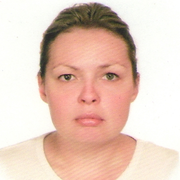Dr. Olga Volkova [Moscow State University, Russia]
Title: Low-dimensional nitrates of transition metals
Time: 10:00 - 11:00 AM, Sunday, October 25, 2015
Place: Conference Room 201, HPSTAR (Shanghai)
Host: Dr. Xiao-Jia Chen
Abstract:
The nitrates of transition metals can be considered as either “brand new” or “quite old” family of low-dimensional magnetic systems equally well. In fact, the copper nitrate trihydrate Cu(NO3)2x2.5 H2O has been one of the first inorganic objects where the spin liquid as a ground state of matter was confirmed both experimentally [1] and theoretically [2]. The study of this compound has played an outstanding role in formation of basic concepts of low-dimensional magnetism. Recently, the new members of low-dimensional transition metal nitrates, i.e. Cu(NO3)2xH2O [3-4], (NO)[Cu(NO3)3] [5-6], Ni(NO3)2 [7] and Rb3Ni2(NO3)7, become available both in polycrystalline and single crystalline forms. Physical characterization of these compounds indicates that magnetically ordered state realized in these systems at 3.6 K, 0.58 K, 5.5 K and 4.1 K is, respectively.
Two dimensional characters of magnetic exchange interactions separate three former compounds from the rubidium – nickel nitrate. Here magnetoactive Ni2+ ions in octahedral oxygen environment connected via triangular nitrate groups form ladders. The temperature dependence of magnetic susceptibility, demonstrate Curie – Weiss behavior at high temperatures with subsequent broad maximum at about 11 K and additional hump at 4.1 K. The fit of experimental data in S = 1 dimer model allows estimate △=11 K. Therefore the strongest exchange interaction in the system can be expected between nickel ions along the range.
[1] L. Berger, S.A. Friedberg and J.T. Schriempf, Phys. Rev. 132, 1057 (1967).
[2] J. C. Bonner, S.A. Friedberg, H. Kobayashi, et al., Phys. Rev. B 27, 248 (1983).
[3] O. S. Volkova, I.V. Morozov, E.N. Lapsheva, et al., JETP Letters 89, 88 (2009).
[4] M. Yehia, E. Vavilova, et al. J. Low Temp. Phys, 159, 96 (2010).
[5] O. Volkova, I. Morozov, et al. Phys. Rev. B 82, 054413 (2010).
[6] C. Balz, B. Lake, et al., Phys. Rev. B 90, 060409R (2014).
[7] Volkova O.S., Mazurenko V.V., et al. Phys. Rev. B 90, 134407 (2014).
Biography of the Speaker:

Dr. Olga Volkova is an associate professor at the Physics Department, Moscow State University. She was working as a post-doc at the MSU from 2006-2009. She got her PhD in 2006 with a dual between mathematics and physics. Her research mainly concerns material science research. Her current interest focuses on studying phase transitions and magnetism in low dimensional systems and in electron strongly correlated materials at various conditions by using thermodynamic methods.
